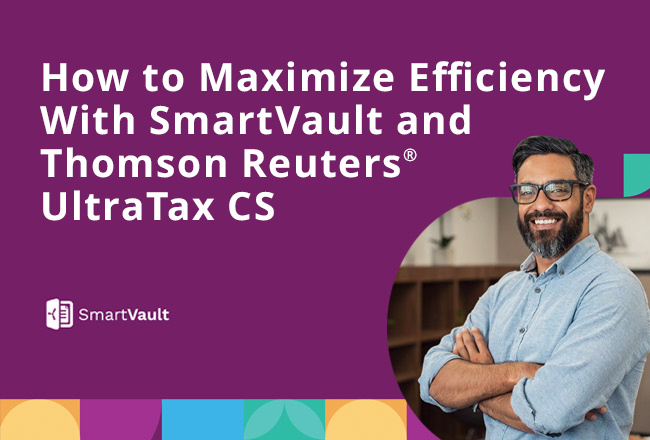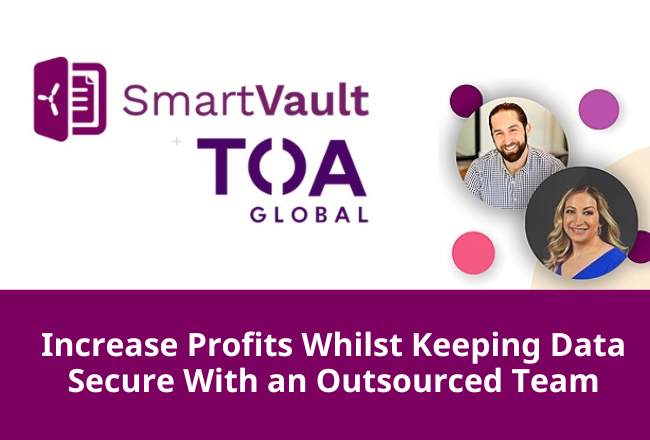
The Benefits and Cost Savings of Switching to an Online-Only Accounting Practice
In the first part of our content series on digital-only accounting practices, we covered what an online practice is, what modern clients expect from modern accountants, and how to decide which clients to take with you as you transition to a digital-only practice. You can read the first part of this content series here if you haven’t already.
In this second part, we’ll cover some other important aspects of switching to a digital-only practice, including the benefits for you and your clients, as well as how much you should charge for these services, and more.
What are the benefits of switching to a digital-only accounting practice?
Let’s start with the benefits for your clients:
- Working anytime, anywhere. Clients will be able to access their information no matter where they are or what time of day it is when you move your practice to the cloud. They’ll no longer have to wait until your accounting firm opens to take a look at their finance and/or tax data: They’ll have 24/7 access to their data. (And, this goes for accountants, too! You can work anytime, anywhere, so if you’ve been thinking of taking that month in Puerto Rico to relax in the sun while you work, go for it!)
- Faster responses: While it’s not exactly reasonable for you (or the client) to expect a response to a query immediately, a digital-only practice ensures clients receive answers to their questions more quickly than they did when working with a traditional practice.
- Increased efficiency. Automation has exponentially increased the efficiency of accounting firms, which is great for both you and your clients. As Ledden points out, “automation ensures that previous time-consuming tasks like issuing invoices and recording expenses are now 100% automated, which is a huge benefit for clients.
Now, let’s move on to the benefits for you, the accounting and finance professional:
- Enforces modern practices. When you move to a digital, online-only accounting practice, Ledden says, clients must use technology to get in touch with you. “They can no longer simply drop off a box or bag of receipts during tax time and expect you to take care of it,” she says. “They must use tech.” This makes things easier for you.
- You can transition to a model of team-based servicing. While accounting is—and always will be—a client-focused job, with a digital-only practice, you can take ownership of the client experience using your tech stack. Additionally, you’ll still be able to provide a personal touch. You can assign different staff members to each client to ensure they always receive the attention they deserve. With a centralized information model, both you and software vendors provide to all members of the team, so any staff member can easily jump in and help the client. It’s beneficial to have all team members be able to access all records just in case one person is out sick, swamped with work, or on vacation.
- Package-based offerings: A package-based offering comes with benefits for both you and the client. Clients can choose which services they need and add to these later. As Ledden points out, here’s how this helps you: “You won’t spend more time spending additional resources on one client (without being paid for the extra services) and not being able to get to others.”
How much should I charge for my accounting services?
This age-old question is always one that makes accounting professionals somewhat nervous. What if you overcharge and lose clients to your competition? Alternatively, what if you undercharge and wind up undervaluing your work and losing money?
Here are Ledden’s suggestions for avoiding either of these difficult scenarios:
- Take a look at what your competition is charging, particularly successful accounting firms. You can either check their prices online or even call to ask how much certain services cost (although we’d recommend not identifying yourself as a competitor).
- Offer subscription-based pricing. This is what streaming services like Netflix and HBO Max do, and it’s proven to be a highly successful business model. You can do this “either monthly or annually,” says Ledden, “and it makes modeling your growth pretty easy.” With this model, she adds, “clients will pay up front rather than in arrears, and you won’t have to chase payments.” To make subscription-based pricing even more attractive, create package bundles that add on certain services should clients choose to accept them.
- If you’re in a niche industry, offer packages that reflect this to stand out from the competition. Ledden advises you to “look for unique selling points that will help you avoid a race to the bottom.” If you’re a bit nervous about this, quote some of your current or potential clients, see how they react, and adjust prices from there so they’re fair to you but don’t scare people away.
The Cost to Accountants: How much will I save with a digital-only practice?
This is a common question accountants wonder about: How much money will they save by transitioning to a digital-only practice from a brick-and-mortar one? The answer is a little more complicated than you might think, but, overall, a digital-only practice is a better investment than a brick-and-mortar office.
Costs of a Traditional Practice
- Office rent. The cost of renting an office comes with paying utilities and bills. Generally, office rental prices are listed “per square foot,” and the prices vary wildly depending on where you’re located. Nationally, the rate is currently $38.22 per square foot, and this does not include the cost of utilities and bills. In San Francisco, the rate per square foot is a whopping $66.07 per square foot, and the rates have increased over the past few years.
- Business rates. If you have an office space, you’ll need to pay which is an extra tax rate you pay to the US government each year. It can be quite expensive: up to 21% of your earnings.
- Insurance: All accountants are required to pay for liability and malpractice insurance or errors and omissions insurance (E&O) insurance. This is not optional.
- IT software, hardware, and additional staff: In addition to purchasing, maintaining, and even replacing software and hardware, traditional practices need to pay not only for staff members like principals and accountants, but also for office managers and receptionists.
Costs of an Online Practice
- Insurance: Similarly to a traditional practice, you will need to pay for liability and malpractice insurance or errors and omissions insurance (E&O). Again, this is not optional.
- Full app stack: “All you need to start your online practice is a laptop and broadband,” says Ledden. You’ll also need to build a full app stack, edit yours, or add new software that integrates with your current stack and is easy to use. This will likely be the most expensive part of an online practice.
- Principal/business manager: This individual will increase the efficiency of your business and will ensure you focus on value-added, accounting-focused services for your clients, rather than having to deal with office management tasks.
- Web developer and designer: “You do need to know what technology can do, and you do need to be present on all social media locations,” says Ledden. You also need to stay ahead of trends and ensure you post regularly and do all your social media marketing online. A web developer and designer—particularly one who can act as a social media manager—is a crucial part of a modern accounting firm. Better still, they can often be hired freelance and save you both time and money. And, they’ll have the knowledge to help you create a brand identity to distinguish yourself.
In the third and final part of our content series, we’ll go over the step-by-step process to help you convert your traditional accounting practice into a digital, only-one firm that will make you more competitive, increase your bottom line, and future-proof your practice.




